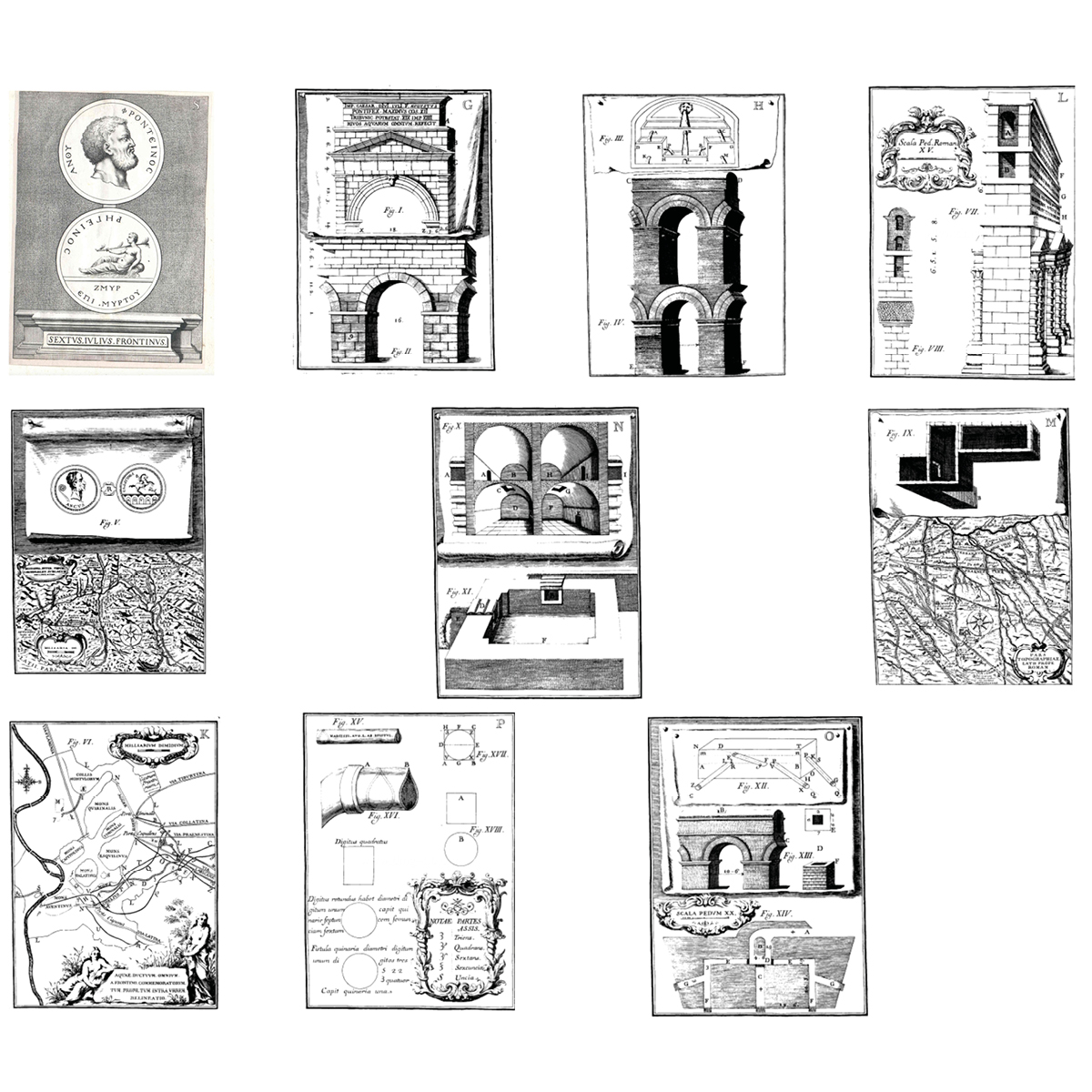
30 - 103 AD
Roman hydraulic engineer, politician and author of technical treatises
Sextus Julius Frontinus was appointed the title “Curator Aquarum”, a position in Ancient Rome in order to administer the aqueduct system. He can be referred to as he Vitruvius of the plumbers, since he is the author of the first known technical treatise. He wrote De aquaeductu urbis Romae, a milestone in two volumes on Roman aqueducts providing valuable information, the first official report of an investigation about engineering works ever to have been published.
Below is an example of his description on Ajutage quinaria, a tube through which water is discharged; an efflux tube; as, the ajutage of a fountain.
“Those who refer it to Vitruvius and the plumbers, declare that it was so named from the fact that a flat sheet of lead 5 digits wide, made up into a round pipe, forms this ajutage. But this is indefinite, because the plate, when made up into a round shape, will be extended on the exterior surface and contracted on the interior surface. The most probable explanation is that the quinaria received its name from having a diameter of 5⁄4 of a digit, a standard which holds in the following ajutages also up to the 20‑pipe, the diameter of each pipe increasing by the addition of ¼ of a digit. For example the 6‑pipe is six quarters in diameter, a 7‑pipe seven quarters, and so on by a uniform increase up to a 20‑pipe.”1
← Back to Lexicon
Roman Aqueduct index of sections. Drawings by Ioannis Poleni.
Sources: https://www.dmg-lib.org/dmglib/streambook/index.jsp?bookid=23059009
